
On the Road Again
There was a purpose to this road trip: to visit a new country (and the first place I had ever been starting with the letter ‘X’). So unusually I actually booked five nights at a campsite in Andorra (the new country) in a village called Xixarella. We just had a week or so either side of that to fiddle around with. It was Peaches’ first road trip since her incident. But also, it was a chance to visit Rennes-le-Château on the way. This was a place I had a particular reason to visit – more of that later.
It was not the best of starts, for after setting off at 4 a.m. the campsite near Nantes, where we found ourselves at 7 p.m. had a sign outside saying “Complet”. Well, it didn’t look very full so I thought I’d ask anyway. And in fact, yes they did have room for one night, lots of room as it turned out. There is something to be learned from this, I’m sure. Uzerche was the next stop and Marilyn (the SatNav) sent us right into the wild end of nowhere to a very smart campsite. Curiously, everyone there seemed to be Dutch. But the bar/restaurant was swanky-looking, the pool inviting and the landscaped grounds were refined in the extreme. It was expensive and even the camp leaflet was all in Dutch. The lady I asked at the bar was Dutch too and she looked at me as if I were mad when I enquired about the possibility of a pitch for the night. Then she called a man from the kitchen who told me that there was no space at all, even for one night. I worked out later from the leaflet what it was with this site at La Bonne Source. It was an exclusively Dutch site offering “a vacation spot where you can really feel at home as a Christian.” Ah, all became clear, I understood that look; she had obviously remembered the bit about no room at the inn from The Instructions and when she saw a mother with child, had decided to follow that bit rather than other passages advising charity. So back on the road it was, and in heading to a near-ish site we drove past a completely empty site next to a fishing lake close to the village of Lubersac. Oddly, this too was run by a Dutch couple, but unlike the one up the road, was the polar opposite: deserted. So they obviously had room then. The only problem was that neither Janny, nor her husband, Bertus, spoke a word of French. How could a site be so totally empty in the middle of the high season? No matter, they actually spoke English, but I didn’t ask why this was so depopulated and the one up the road was so full.
Rennes-Les-Bains
The first longer stay was in Rennes-Les-Bains, in the low Pyrenees of the Aude region. This was described as the “esoteric Mecca of the Aude”. Should be interesting then. Josette, who is retired, along with her husband, comes down here in the summer from Normandy to help out their daughter and son-in-law with the running of the site. She takes us to a golf buggy so she can show us the options.
“Watch out; she doesn’t know how to drive that thing,” comments one of the staff at the reception with a giggle. That evening we stroll past the bar, where a tagine and Sangria evening is being prepared, and walk along the river into the village. It is a spa, offering treatments in the 33 degree thermal waters and the place is unusually full of hippy-looking types: baba cools as they call them here. In the square, we stop for a drink on a café terrace. Oddly, the waitress does not speak much French. She is an Australian working here over the summer with the aim of learning the language.
Maria, the joker from yesterday, is cleaning the shower block the next morning when I get there. She complains that there is no work for the likes of locals such as her and that most of the tourist facilities are owned and run by “people from the North”. She advises me to visit the “Fauteuil du Diable” (the Devil’s Armchair) as this special stone has the power to re-energise people in some mystical way. It has been carved in the shape of an armchair and has a Templar cross engraved on the back. No-one knows how old it is, but it is said to have been carved for the Comte de Fleury in the eighteenth century. On the evening walk into the village, we head up into the woods where we find a small waterfall into a pond, beautifully lit in the golden evening light. Near here there is a she-hippy, living in a cave in the woods. By the river, a man comes out of his house and we exchange a greeting. I ask him about the Devil’s Armchair. Has it really got powers? Has he himself felt it? “If you stretch out your arms and touch each side you can feel its power in your spine. You will feel different afterwards,” is his solemn reply.
A traveller summed up Rennes-les-Bains by describing the characters she met there. It captures the place in such a perfect way that I offer a loose translation of the piece here:
“A woman with a cascade of hair will stop to talk to you. Her long hair is flecked with white. Her colourful, organic cotton dress may seem a little too big for her, but is incredibly comfortable. She will explain that she and her friends have come to Rennes-les-Bains to feel the forces of nature, so alive in the forests here. She will confide to you that they are in fact looking for the tomb of Mary Magdelene, her idol. In a whisper, she tells you that Mary Magdelene was the husband of Jesus and it was she who gave birth to these lands.
A man will have his feet in leather sandals, in the style of a monk, a scarf around his neck, with a pleasant face. He will explain that he has spent more than ten years in India looking for ‘The Truth’. Then he found his truth here, in Rennes-les-Bains. He will spend hours explaining how the most important thing in life is the love we have for each other – ‘If I speak to you, it is because I love you.’
Another man carries a salesman’s case. His shirt and townie trousers will give no clue as to the ideas in his head. He will hold a serious meeting in a village shop where he will explain to the attentive audience that in Rennes-les-Bains one can communicate with the water spirits. Using a clock at the end of his talk, he will measure the size of your aura and maybe you will have the good fortune to give him a pleasant surprise: he won’t be able to work out the outer limit of your aura and respectfully declares that you have the gift of healing.
Then there is the man wearing all the latest technical hiking equipment, his waistcoat has useful pockets, his hat of weather-resistant fabric, his trendy backpack. He will admit to you that he is over seventy years of age. He will just have overtaken you as, out of breath, you stumble up to the Château de Blanchefort. Not a drop of sweat on his brow, he will offer you a cereal bar…
And all of these diverse characters, so different one from the other, co-exist in the greatest mutual respect.” (http://www.terre-de-mysteres.fr/hauts-lieux/rennes-les-bains-haut-lieu-esoterique-de-laude.html#more-91)
So we got up to the Fauteuil du Diable and sat in the stone chair. It has comfortable armrests. And did it work? Well, my back had been a bit of a nuisance but didn’t hurt for the rest of that day.
The girls wanted to go to the thermal spa pool so I dog-sat as it was too warm in Peaches for him. I was disappointed to have missed the healing waters and be forced to sit reading in the bustling village square over a beer or two at a café… but only slightly. Before, the square had had some raucous teenagers in one corner behind a large tree and now some hippies are there smoking joints. It must be the naughty corner.
On our last morning Maria asked me if we had been to the Devil’s Armchair. “Did you feel it?” she asks. “I don’t know… it’s weird… like some sort of magnetic vortex…”; she’s rolling her eyes now.
Rennes-Le-Château
Rennes-le-Château (inc.) makes the most of the story of the Abbé Saunière. I had wanted to come here ever since reading the story of the enigmatic Abbé in the excellent book “Rat Scabies and the Holy Grail.” It concerns the true story of a nineteenth-century parish priest who mysteriously became an incredibly rich man overnight after purportedly finding something during renovations to the church. The village is perched on a high rocky outcrop and is not the sort of place one would normally expect to make one’s fortune. Abbé Saunière lived with his housemaid, some twenty years his junior, and spent the rest of his life financing expensive renovations and building projects around the presbytery. After he died, the housemaid promised to reveal the secret before she too shuffled off her mortal coil. Tantalisingly, she also said that there was plenty more where that money came from, more than she could ever spend in her lifetime. Unfortunately, she took ill one day and was left without the ability either to speak or to write. She died two weeks later. So stories of lost Cathar treasure, loot from the Crusades, or even of the Holy Grail itself began to circulate and this is where the story links to Dan Brown’s “The Da Vinci Code”. From the mid-twentieth century treasure hunters and mystics, of which Rat Scabies (the former drummer with The Damned) was just one, began to arrive. Excavations ensued. The publication of Dan Brown’s book saw the commercialisation of Rennes-le-Château into what I now call Rennes-le-Château (inc.) where there is a dedicated museum and well-established visitor’s programme.
Xixarella
Marilyn sends us on D roads over the Pyrenees into Andorra. It is a spectacular drive up the hairpins, along wide, green alpine passes and amongst the clouds: one of those drives where you enter a tunnel and when you come to the other side you hit an entirely different climate.
Finally, we make it to our destination: Xixarella. Andorra is not part of the European Union; it has “special status”, like Switzerland. But the border is a relaxed affair and each of the policemen in his booth is sitting intently doing things on his mobile phone. I actually got the passports out and stopped, only for one of them to look up briefly from his phone and with an irritated wave of his hand send us on our way. What a job! Sitting up a mountain in the clouds playing on your phone all day, and then getting paid for it? That sounds just about as hard as sitting reading over a beer on a sunny café terrace and chatting to some friendly hippies… I mean dog-sitting…
Andorra is clean, prosperous and not the sort of place you can imagine any homeless people. Everywhere you look, the mountains are breath-taking. It is the sixth smallest country in the world so it does not take long to get from one side to the other, even though there are no motorways (and no airports). The campsite could not fail to be in a beautiful spot, however hard it could have tried. It is also the only country where the official language is Catalan and 80% of the GDP is accounted for by tourism. In the campsite office, I pick up a leaflet for the tourist bus routes (at 38 euros per person) which is a good start to get out and explore independently, albeit in second gear most of the time. We drive to the top of a mountain and then to the most elevated capital city in Europe, Andorra La Vella, where I am delighted to find a LeClerc hypermarket. At tax-free prices the range of foodstuffs is very tempting: mega bottles of olive oil for five euros, enormous blocks of cheese for three fifty, etc… From there we head back to the town of La Massana where we take the ski lift up the mountain some 700 metres above the town. In the summer it is a mountain bike resort, rather than a ski resort. It is a hot mid-August day and the dog is made up to find that there are still small patches of snow up here. Come to that, the daughter seemed to enjoy it too, although she didn’t roll in it like he did, just took off her shoes.
We got back to camp just as a mountainously monstrous storm hit, its thunderclaps amplified by the terrain. Time to hunker down and cook up one of the local dishes: cheese fondu. Hare, wild boar and partridge are also typical fare here. Forty-eight hours of rain stopped play in Andorra somewhat. It is a very outdoorsy country anyway but camping out, even in Peaches, has a sell-by date when it is so relentlessly wet. So we blew out on the last night, even though we had paid for it, opting to go and look for some sun. It had got to the stage of sitting in a thunderstorm watching a teenager running to the shower block and dropping his pants in the middle of the roadway. “Oh my goodness! That teenager has just dropped his pants and they’re Star Wars pants,” Iona declared gleefully. “How embarrassing!”
“I don’t think a teenager would be wearing Star Wars pants,” was her mama’s reaction. But the next half hour was spent watching the campers’ reactions on their way to the shower block to a pair of pants in the middle of the road. Some stopped and did a double take; some side-stepped in revulsion and some sniggered, until one kind lady spoiled our fun by picking them up and hanging them helpfully on the bottom of a lamp-post.
“Eeeew! I wouldn’t touch those pants,” Iona commented.
I had, shamefully, been enjoying this game, so I went out into the torrent of rain, implanted a stick by the roadside and hung them on there. In so doing I was also able to confirm that they were indeed Star Wars pants. I used the stick to pick them up, in case you were wondering. It really was time to leave rainy Andorra and look for the sun.
Limeuil
Sun-searching involved a drive back up to the Dordogne to a beautiful campsite, right on the river bank under a medieval village at the confluence of the Dordogne and Vézère rivers. The pitches were huge and the sunny, landscaped pool was set amongst banana and palm trees. I congratulate Didier, the owner, on the second star on the shirt that France have just won at the World Cup. He told me that he had already got his French shirt sporting the second star the week before. It must have taken virtually no time at all to get those made up and out into the shops. Limeuil is a picturesque village with steep winding streets and narrow alleyways. There was a small food market and glass-blowers’ workshops, but nowhere to buy basics except at the campsite shop. No matter: it is hot and sunny, just what was required after Andorra. So riverside barbeques, floating down the Dordogne using the current on inflatables and doing nothing in particular was the order of the day.
Video from the riverside here.
Omaha Beach
Finally it was a trek back from the Dordogne via Poitiers to a campsite on Omaha Beach in Normandy for a couple of nights – time enough to pay our respects to the fallen and visit a supermarket.
In the end, the goal had been achieved. But truth be told, it was one of those trips where the travel outshone the final destination; this is the mark of a good road trip. For it was in the mysterious tale of a once-obscure country priest, in the discovery of a community of hippies beneath the winding hairpins and high passes of the Pyrenees and in a quaint Dordogne village where people played in the river that this travel was birthed… oh, and we also got to Xixarella, Andorra. Job done.
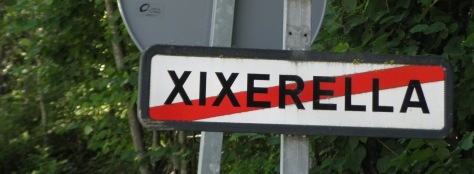









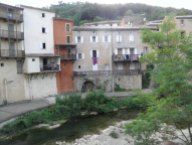














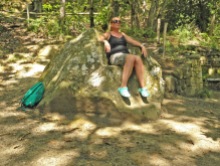





















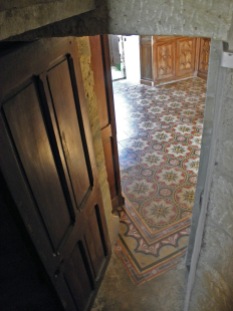























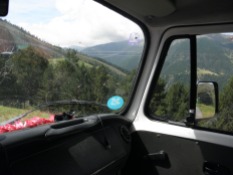

































This was a lovely blog poost
LikeLiked by 1 person
Thank you, Elle. That is kind of you to say so.
LikeLike